Home / Leave On Chemical Peel
Leave On Chemical Peel
Experience the Transformation with Leave-On Peel Treatments
Overview
Leave-on peels, including chemical peels, are advanced treatments where dermatologists apply chemical solutions that remain on the skin for a specified period, causing controlled exfoliation. This process removes dead skin cells, revealing fresher, smoother skin and reducing fine lines. Chemical peels also address deeper issues like hyperpigmentation and uneven skin tone by stimulating collagen production and promoting skin renewal, leading to long-term improvements in skin health and appearance.
Regular use under professional guidance is essential for optimal results. Dermatologists customize treatments based on individual skin types and concerns, ensuring safety and effectiveness. This personalized approach makes leave-on peels a popular choice for those seeking to rejuvenate their skin and maintain a youthful complexion.
Types Of Leave-on Peels
The choice of leave-on chemical peel depends on your skin concern, desired results, and individual skin type. There are various types of leave-on chemical peels, each varying in depth and intensity:
| Peel Type | Name Of Peel | Conditions Treated | Probable Downtime |
|---|---|---|---|
| Superficial Leave-On Peel | Salicylic Acid Peel | Mild acne, oily skin, blackheads, fine lines | Minimal downtime, 24-48 hours to heal completely. |
| Medium Leave-On Peel | Glycolic Acid Peel | Fine lines, mild sun damage, uneven skin tone | Moderate downtime, 3-5 days to heal completely. |
| Deep Leave-On Peel | Retinoic Acid Peel | Deep wrinkles, severe acne, hyperpigmentation | Significant downtime, 5-10 days to heal completely. |
Fantastic Results Of Leave-on Peels
Leave On Chemical Peel treatments often delivers noticeable improvements in skin texture, tone, and clarity. Before and after images of patients typically reveal reduced fine lines, minimized pores, and a brighter complexion post-treatment. These results showcase the effectiveness of chemical peels in enhancing skin appearance and addressing specific skincare concerns.
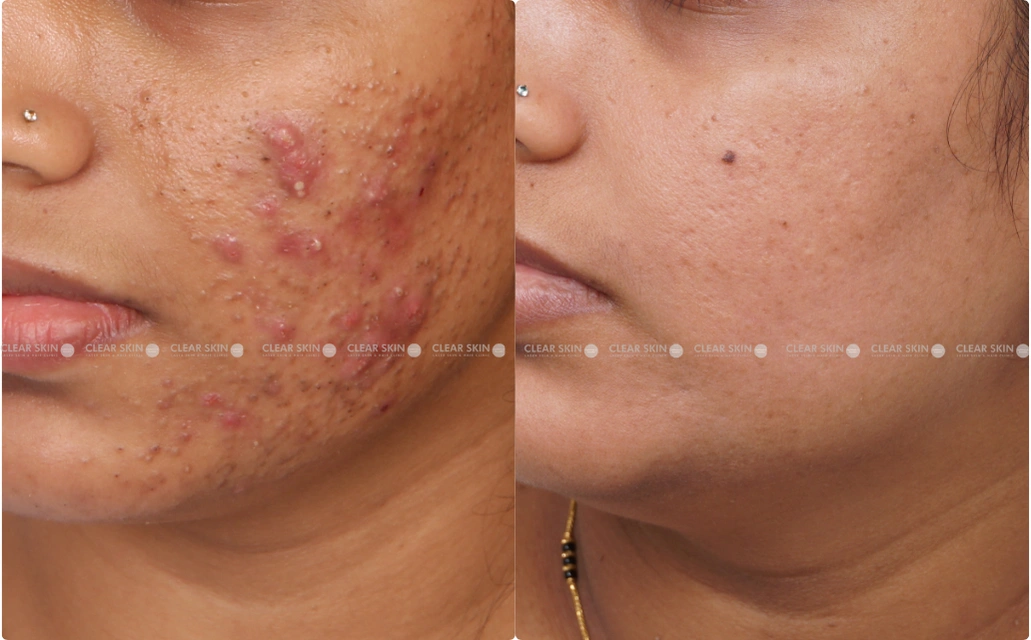
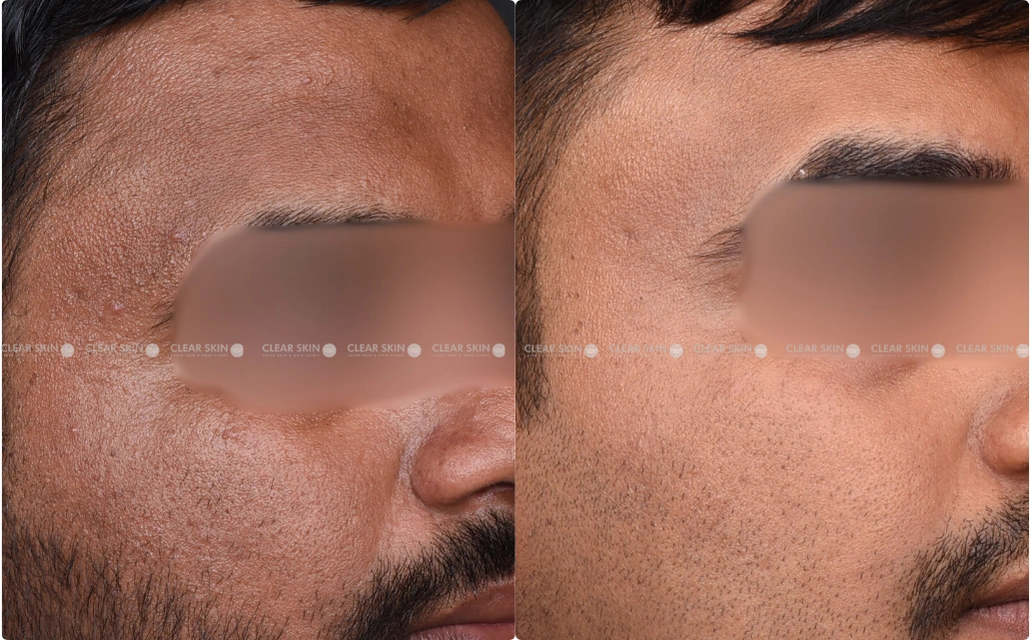
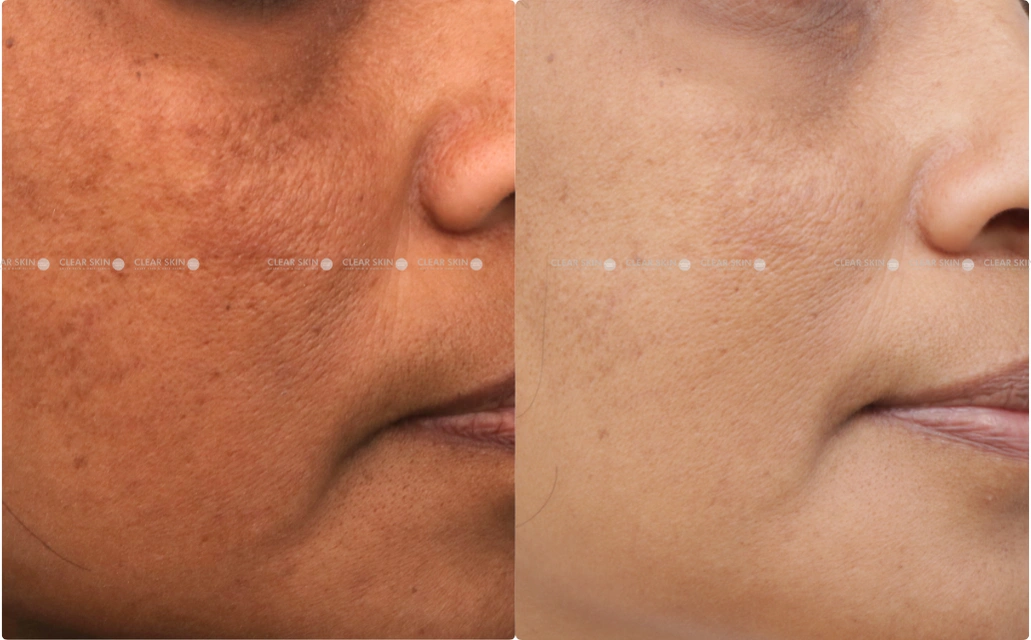
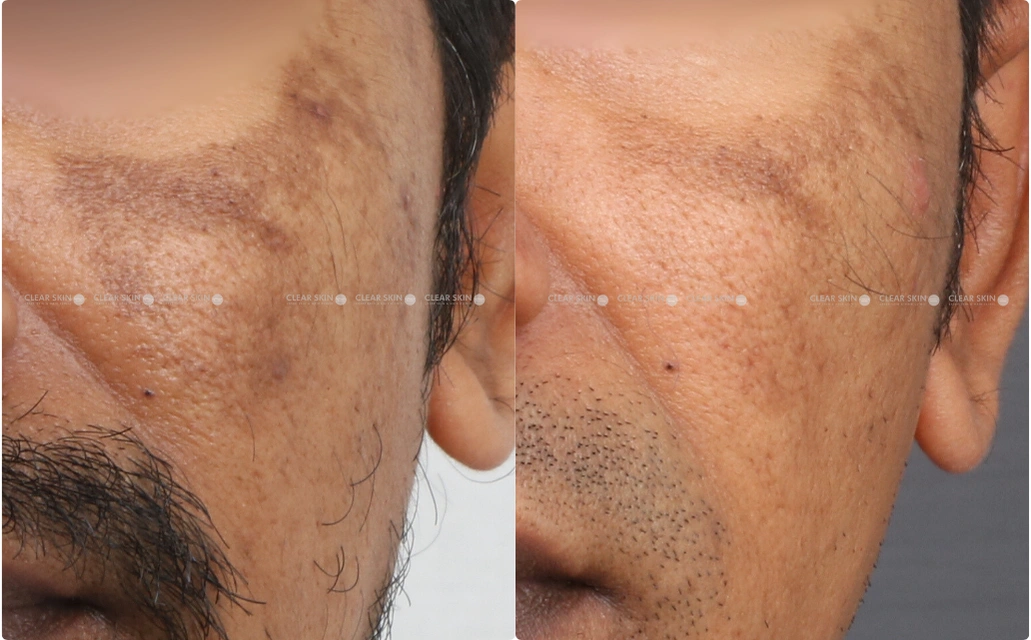

70,000+ Successfully Treated Acne Patients Over 34 years
(You are one click away from flawless skin)
Cost Of Leave-on Peels Treatment In Pune
The cost of Leave On Chemical Peel treatments in Pune can vary based on the clinic and specific peel used. Prices may differ depending on the expertise of the skincare professional and the complexity of the treatment. It’s advisable to consult with clinics directly for accurate pricing and to discuss individual skincare needs.
|
Conditions |
Min. Cost Per Session | Max. Cost Per Session | Avg. Cost At Clearskin |
|---|---|---|---|
| Acne | Rs. 500 | Rs. 2000 | Rs. 500 |
| Pigmentation | Rs. 500 | Rs. 2000 | Rs. 500 |
| Anti Aging | Rs. 500 | Rs. 2000 | Rs. 500 |
| Melasma | Rs. 500 | Rs. 2000 | Rs. 500 |
| Under Eye Dark Circle | Rs. 500 | Rs. 2000 | Rs. 500 |
Get Free Cost Estimate For Leave-on Peels
Send your photos and get the tentative cost of treatment at Clearskin
Process Of Leave-on Peels
Patient’s Guide To Leave-on Peels
All you need to know

Leave-On Chemical Peel treatment uses gentle acids left on the skin to exfoliate, improve texture, and enhance skin radiance without rinsing.
Steps Involved
1 Consultation
Dermatologist evaluates skin type, concerns, and medical history.
2 Preparation
Skin is cleansed and prepped with acetone or a similar solution.
3 Application of Solution
Dermatologist applies chosen peel solution evenly on skin.
4 Duration and Sensation
Peel solution left on skin for specific time, monitored for tingling or burning sensations.
5 Neutralization
Peel may require neutralization with water or specialized solution.
6 Post-Treatment Care
Instructions provided for gentle cleansing, moisturizing, and sunscreen use to manage initial redness or flakiness.
The process of a Leave-on Peel involves several key steps:
Consultation and Assessment: Dermatologist evaluates skin type, concerns, and medical history.
Preparation: Skin cleansed thoroughly and prepped with acetone or a similar solution.
Application of Chemical Solution: Dermatologist applies chosen peel solution (e.g., glycolic acid, salicylic acid) evenly on skin.
Duration and Sensation: Peel solution left on skin for specific time (minutes to 30 minutes), monitored for tingling or burning.
Neutralization (if applicable): Some peels may require neutralization with water or a specialized solution.
Post-Treatment Care: Skin may appear red or flaky initially; instructions provided for gentle cleansing, moisturizing, and sunscreen use.
Follow-up and Maintenance: Multiple sessions may be recommended for desired results; sun protection emphasized for maintenance
Chemical peels are a customizable dermatological treatment that involves applying a chemical solution to the skin, targeting various concerns like acne, uneven tone, and signs of aging. Proper consultation, preparation, application, and post-care are essential for safe and effective results.
Post Procedure Care
The skin is especially sensitive after a leave on chemical peel.
You need to undertake certain steps to take care of your skin.
- Don’t wash your face with hot water.
- Apply to keep your skin hydrated.
- Don’t use a dry sauna.
- Avoid exercises: It is important to avoid doing heavy workouts so as to not sweat.
- Make sure to use broad-spectrum sunscreen every time you go out. This is because your skin is especially sensitive after the procedure.
Remember that while leave-on chemical peels provide impressive impacts, they are not long-lasting. Depending on your skincare and aging, your skin might change with time. Practice consistent skincare to get the best out of treatment. Although, make sure you don’t overdo it.
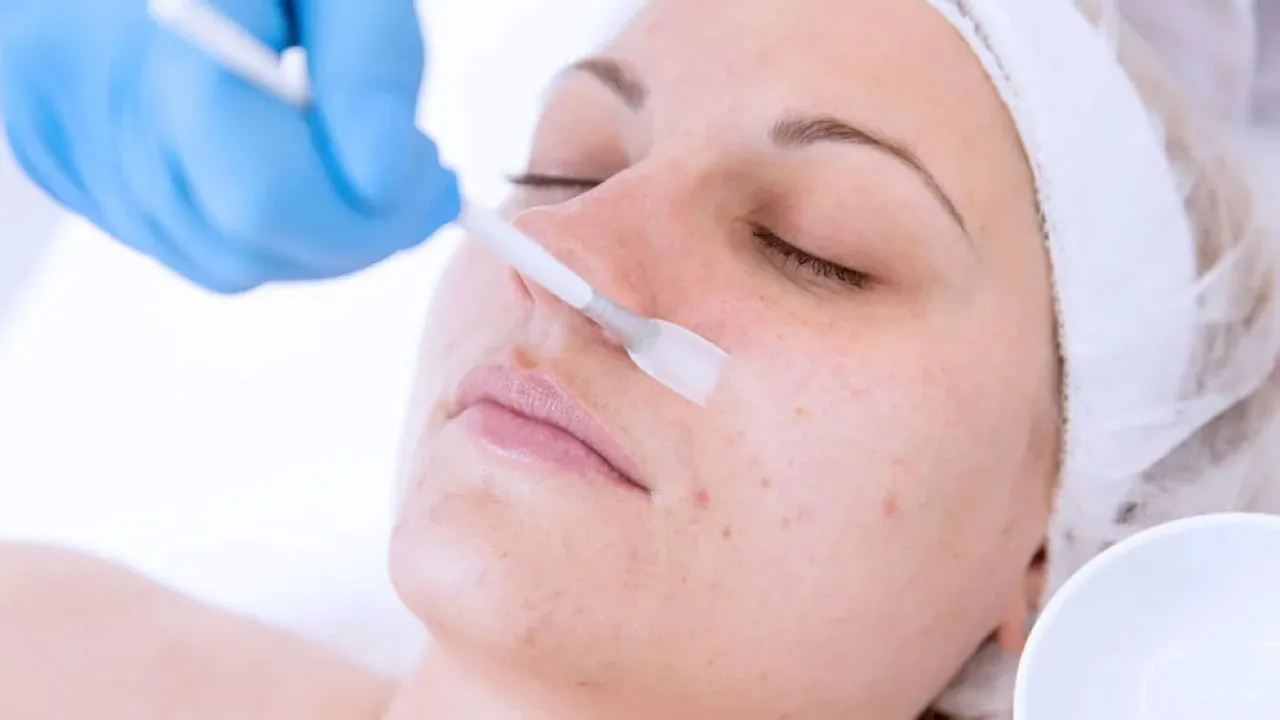
Probable Side Effects
The probable side effects may include:
Redness and Irritation: Mild to moderate redness and irritation are common immediately after treatment.
Peeling and Flaking: The treated skin may peel or flake for several days following the peel, especially with medium to deep peels.
Sensitivity: Increased sensitivity to sun exposure and skincare products temporarily after treatment.
Pigmentation Changes: Rarely, chemical peels can cause temporary or permanent changes in skin pigmentation, particularly in individuals with darker skin tones.
Infection Risk: Although rare, there is a small risk of infection following a chemical peel, especially if post-care instructions are not followed diligently.
Scarring: In very rare cases, chemical peels may lead to scarring, particularly with deep peels or improper application.
Allergic Reactions: Some individuals may experience allergic reactions to the chemicals used in the peel solution.
Skin Tightness: Temporary feelings of tightness or dryness in the treated area are common post-peel.
Eye Irritation: Care must be taken to avoid getting peel solution near the eyes, as it can cause irritation or injury.
Delayed Healing: In some cases, the skin may take longer to heal completely, particularly with deeper peels or if complications arise.
Remember that the side effects and recovery period can vary depending on the depth of the peel. It’s essential to consult with your dermatologist or skincare professional for personalized guidance and to address any concerns or complications that may arise during the healing process.
We Are Here To Answer Every Possible Doubt You Have On Leave On Peel.
If you don’t find answer to your query, then please write down to us. We are always here to help you.
What is a Leave-On Peel?
A Leave-On Peel is a skincare product designed to exfoliate and renew the skin’s surface without needing to be rinsed off. It typically contains chemical exfoliants like AHAs (alpha hydroxy acids) or BHAs (beta hydroxy acids) to dissolve dead skin cells and improve skin texture.
How does a Leave-On Peel work?
Leave-On Peels work by penetrating the outer layer of the skin to break down the bonds between dead skin cells. This allows for gentle exfoliation, revealing smoother, more radiant skin underneath.
What are the benefits of using a Leave-On Peel?
Using a leave-on peel offers several benefits, including smoother and softer skin texture, improved skin tone and brightness, reduction in the appearance of fine lines and wrinkles, enhanced absorption of skincare products applied afterward, and effectiveness in addressing acne and clogged pores.
Who should use a Leave-On Peel?
Leave-On Peels are suitable for individuals looking to improve skin texture, reduce dullness, and address signs of aging or acne. They are generally safe for most skin types, but those with sensitive skin should start with milder formulations and patch-test first.
How often should you use a Leave-On Peel?
The frequency of use depends on the specific product and your skin’s tolerance. It is generally recommended to start with 1-2 times per week and gradually increase if your skin tolerates it well. Follow the instructions provided by the product manufacturer.
When should you apply a Leave-On Peel in your skincare routine?
Leave-On Peels are typically applied after cleansing and toning, and before moisturizing. Follow specific product instructions regarding application and wait times.
Are there any side effects of using a Leave-On Peel?
Possible side effects may include mild tingling, redness, or sensitivity, especially during the initial uses. Discontinue use if irritation persists and consult a dermatologist.
Can a Leave-On Peel be used with other skincare products?
Yes, Leave-On Peels can be used in conjunction with other skincare products such as serums, moisturizers, and sunscreen. Ensure to follow with sunscreen during the day as AHAs/BHAs can increase sensitivity to the sun.
How long does it take to see results from using a Leave-On Peel?
Results from using a Leave-On Peel can vary depending on the individual and the product used. Some may notice immediate improvement in skin texture and brightness, while long-term benefits like reduced fine lines and acne may take several weeks of consistent use.
